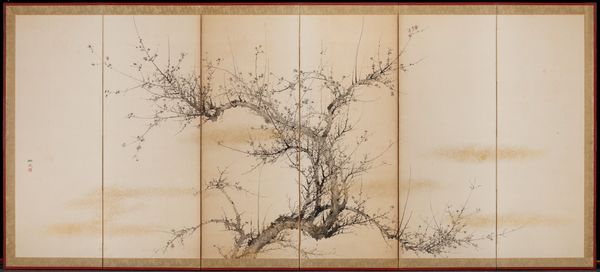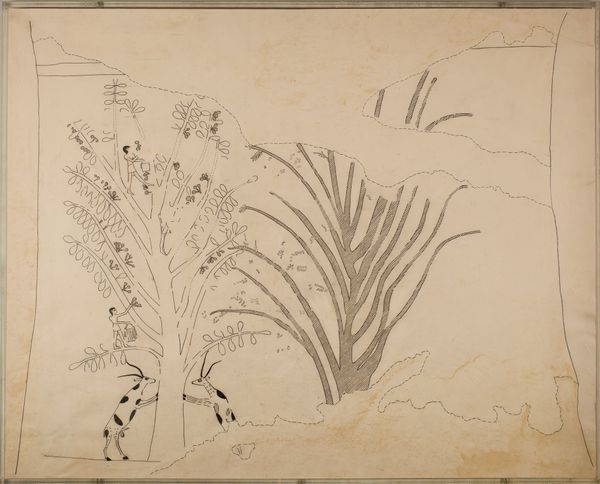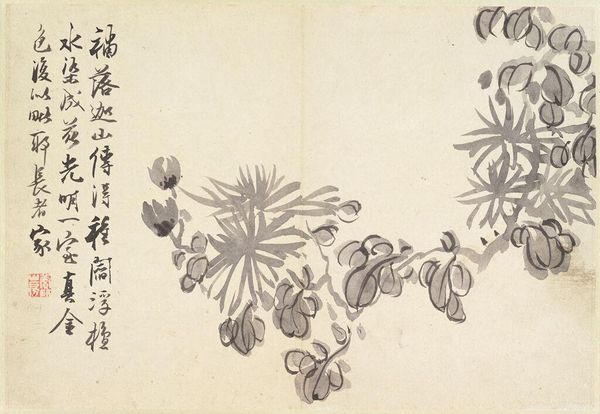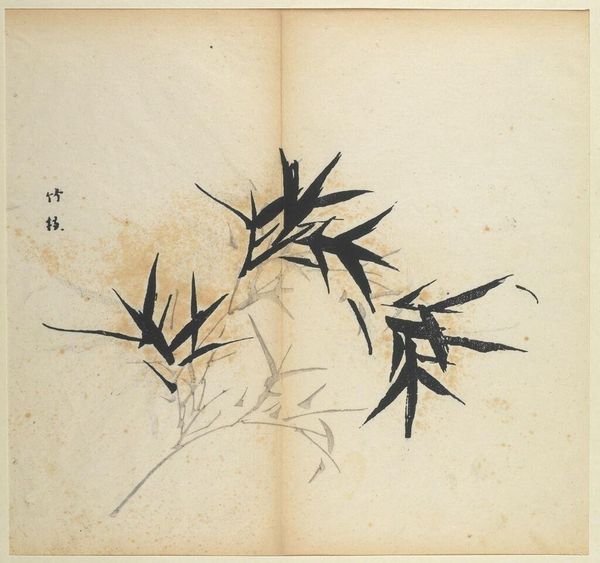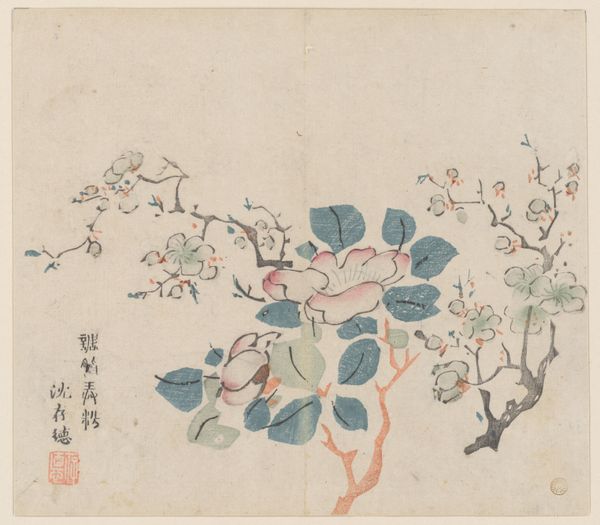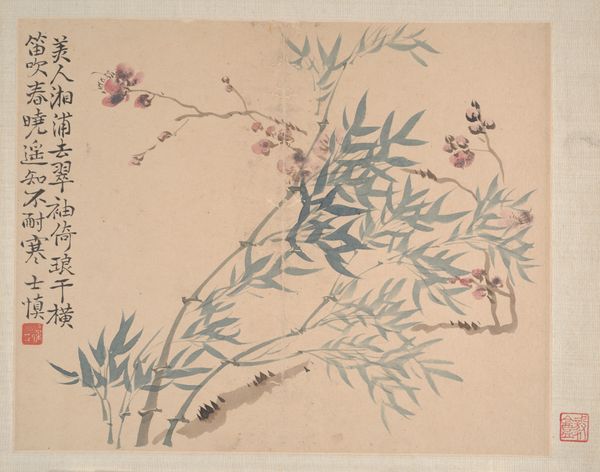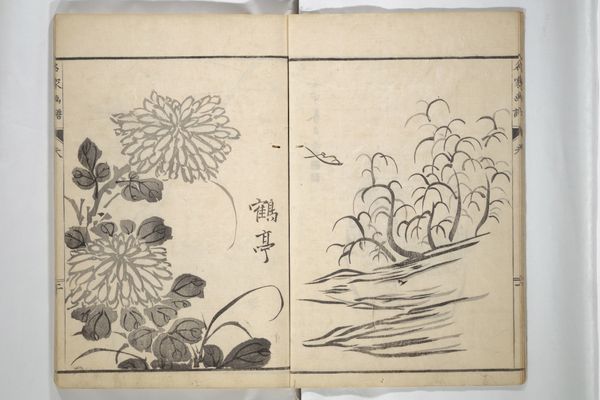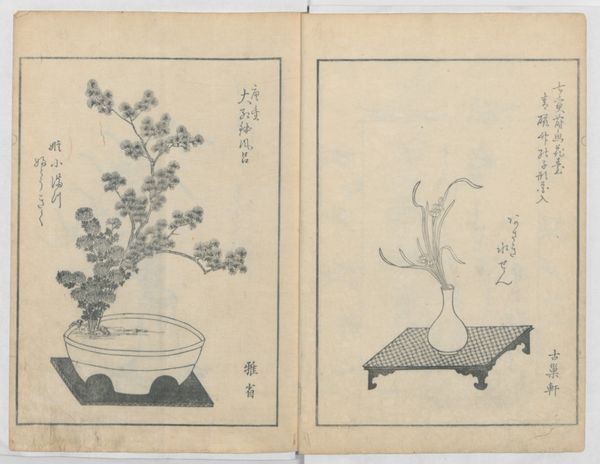![Guide to Chinese Painting (Kanga shinan nihen 漢画指南二編), Second Series: [volume 3] by Kawamura Bunpō 河村文鳳](/_next/image?url=https%3A%2F%2Fd2w8kbdekdi1gv.cloudfront.net%2FeyJidWNrZXQiOiAiYXJ0ZXJhLWltYWdlcy1idWNrZXQiLCAia2V5IjogImFydHdvcmtzLzcxMTQzMjNiLTdkMDAtNGJkMC1hYjUxLThiYzM5MDhmNmEwNS83MTE0MzIzYi03ZDAwLTRiZDAtYWI1MS04YmMzOTA4ZjZhMDVfZnVsbC5qcGciLCAiZWRpdHMiOiB7InJlc2l6ZSI6IHsid2lkdGgiOiAxOTIwLCAiaGVpZ2h0IjogMTkyMCwgImZpdCI6ICJpbnNpZGUifX19&w=3840&q=75)
Guide to Chinese Painting (Kanga shinan nihen 漢画指南二編), Second Series: [volume 3] 1810
0:00
0:00
drawing, print, paper, ink
#
tree
#
drawing
# print
#
book
#
asian-art
#
landscape
#
paper
#
ink
#
orientalism
Dimensions: each: 10 7/16 × 7 in. (26.5 × 17.8 cm)
Copyright: Public Domain
This instructional woodblock print, by Kawamura Bunpō around 1800, offers a guide to painting techniques, specifically depicting trees. Notice the plum blossom on the left. In Chinese and Japanese art, the plum is an emblem of resilience and renewal, blooming even in the harshest winters. This motif echoes through art history, like Botticelli's Venus emerging from the sea, symbolizing rebirth. Consider how these symbols tap into our collective memory, evoking a sense of hope and continuity across cultures. On the right, we see pine trees. Pine, like plum, carries its own symbolic weight, embodying longevity and steadfastness. These symbols recur throughout centuries, subtly shaping our understanding of the world and our place within it. These artistic expressions are not static; they evolve, yet their emotional resonance remains, engaging viewers on a subconscious level. The cyclical progression of symbols ensures they resurface, adapting and acquiring new layers of meaning.
Comments
No comments
Be the first to comment and join the conversation on the ultimate creative platform.

